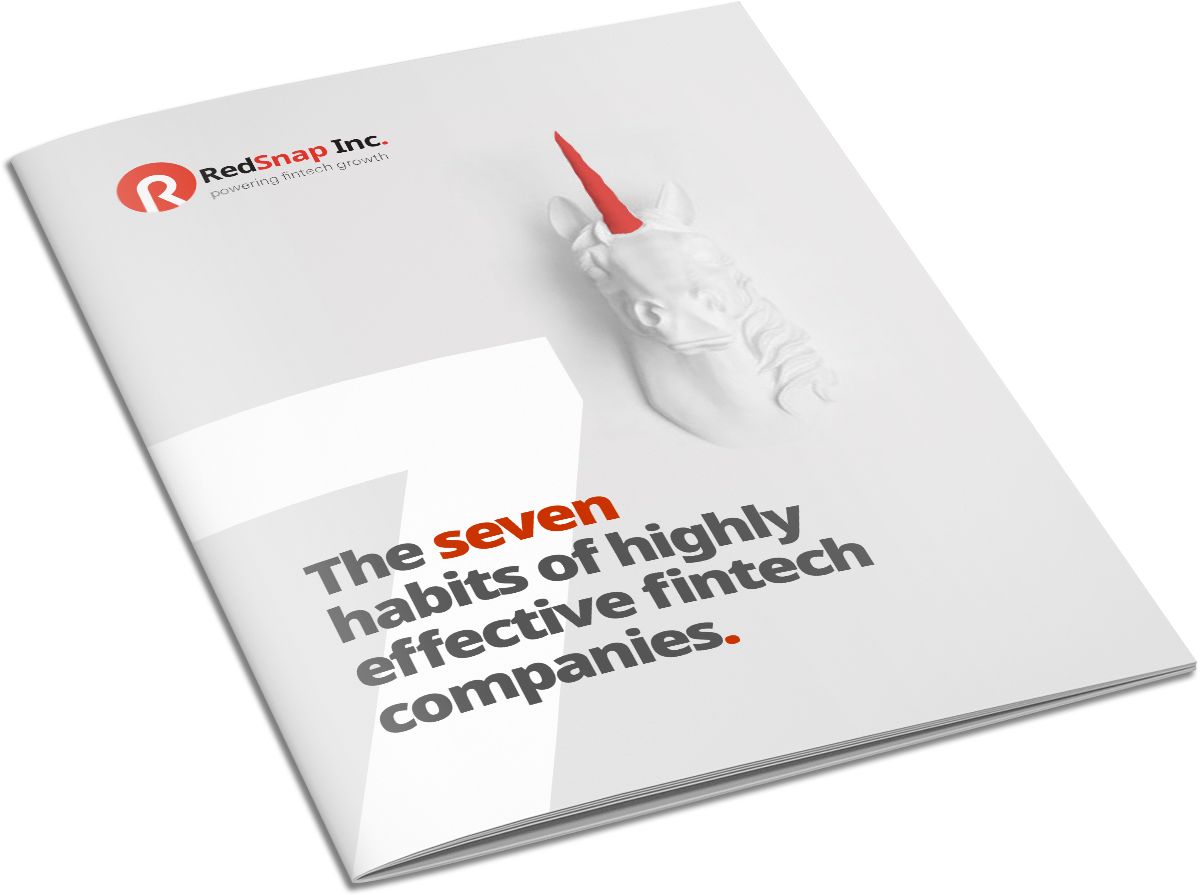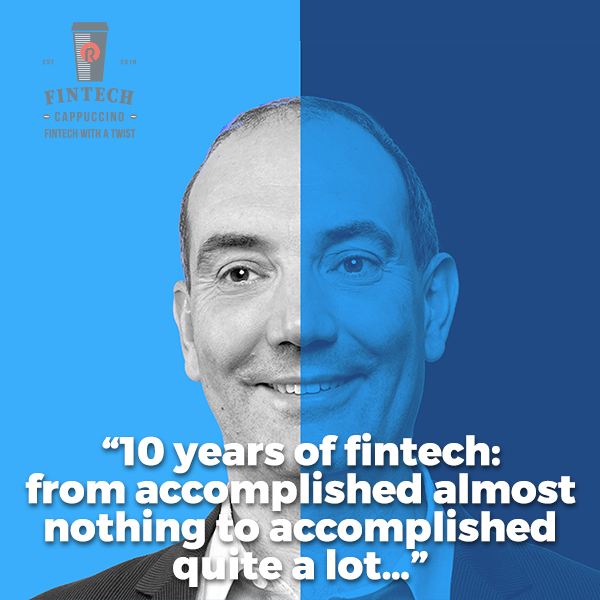The foundation of any successful go to market strategy ...
Marketing
Sales
Automation
For business leaders
For sales leaders
For marketing leaders
RedSnap Inc.
RedSnap Inc. is an agency for fintech branding, marketing & sales. We power fintech growth by aligning your marketing & sales. We develop appealing brands, impactful marketing campaigns and successful sales strategies that truly drive growth. Let’s simply say: we make sure your (potential) clients see you, like you and buy you.
For fintechs
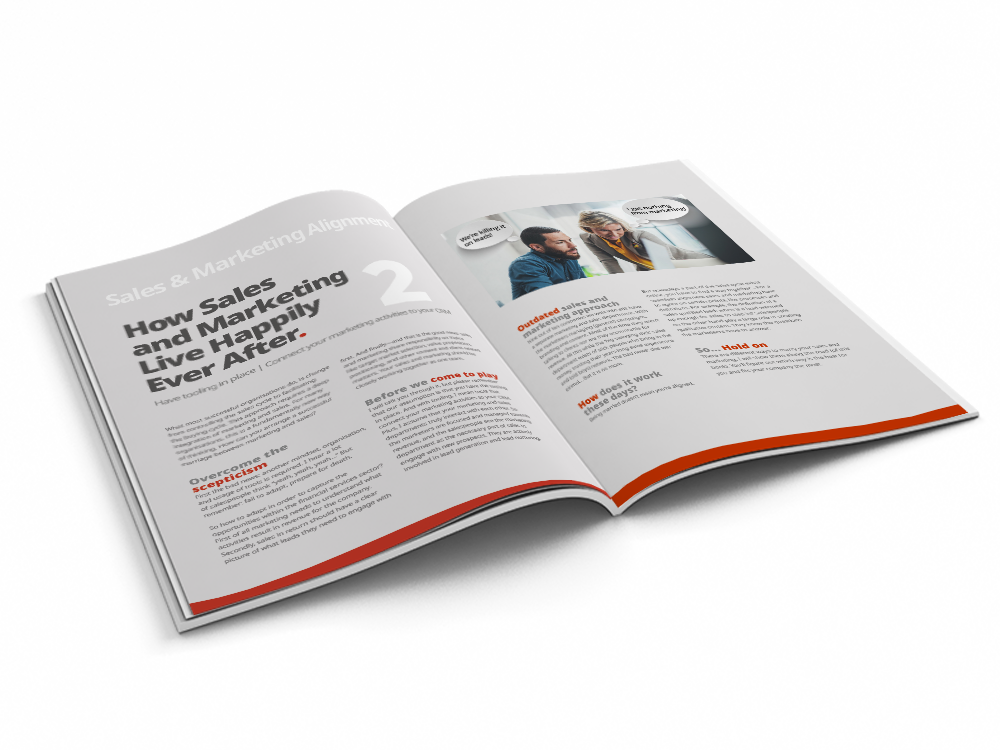
Download here.
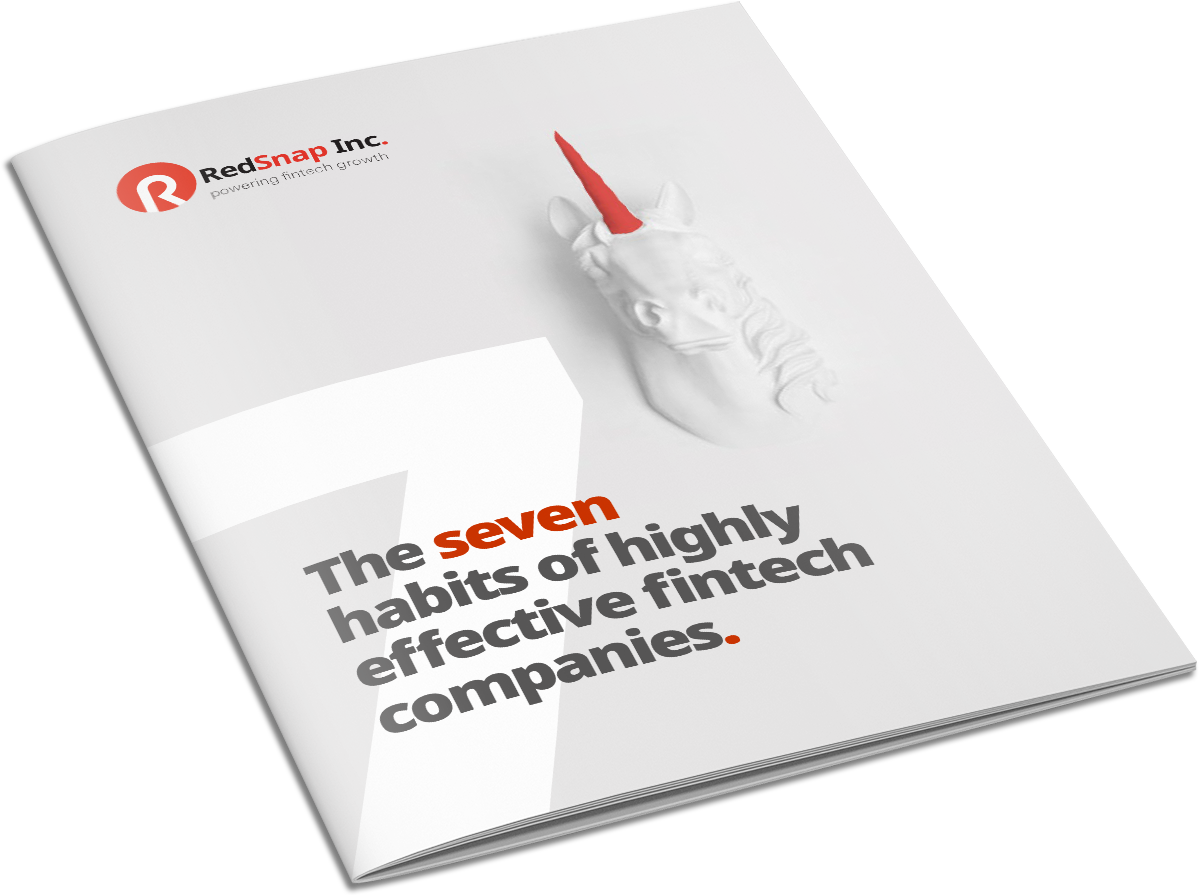
eBook 7 habits of highly effective fintech companies
Fintech
Mind the Gap!
Value proposition: the extra mile.

In this ‘mind the gap’ article we will discuss the value proposition and how it will help your fintech sales efforts in the financial services sector. That is, if applied correctly...
*for readability: the word banker is used for anyone working in the financial services sector
Going the extra mile
A search for the term ‘value proposition’ online will generate a huge number of results.. They all will tell you that it is the promise you make to your clients and that it forms an important part of your marketing strategy. Another common characteristic of these definitions and explanations is that they refer to a general value proposition.
I want to explain how to turn a general value proposition into one that will accomplish what you want: selling more into the financial services sector. A value proposition that goes the extra mile.
The starting points for this overachieving value proposition are:
- To promise is not enough - how your promise is perceived by the banker is what counts
- Will the banker be able to repeat your promise to stakeholders in the bank?
- Being prepared to not have one single value proposition but a multitude of them
Beauty is in the eye of the beholder
We all know that the perception of beauty is subjective - what one person finds beautiful, another may not. We can easily apply this principle to our value proposition, our promise. What one banker might perceive as a trustworthy and relevant promise will not resonate with another..
In judging the promise you make, the ‘beholder’ will always ask “what’s in it for me?”. So what it comes down to when formulating your value proposition is providing the answer to the following question:
What problem do I solve…and for whom?
Answering this question on an industry level is challenging - at an individual level it becomes even more complicated. Problems are personal, pain is personal. Just as a CEO has different headaches than a project manager, a business banker will face different challenges than those faced by a compliance officer.
The only way to live up to your promise to each of these stakeholders and make them perceive your promise as trustworthy and relevant is to have multiple value propositions.
You’ll still have an overall value proposition for the financial services sector and even a different one for a retail bank than for an insurance company. But you’ll have to take it even further: you need one value proposition per member of the buying committee (which usually consists of individuals from at least six departments including IT, compliance, legal/risk, and purchasing). After all, within that insurance company the problems facing the P&C department are widely different than those faced by a call center manager.
This requires a large amount of domain knowledge combined with situational insight. You’ll have to think through the perspective of your client and your client thinks like a banker/insurer/asset manager. They use the lingo and are measured by the metrics of a banker/insurer/asset manager. They will be a hero, make promotion or earn their bonus according to the logic of a banker/insurer/asset manager.
In other words they think, talk and act like a…you guessed it, banker/insurer/asset manager. So you’ll need to do the same. Talk their talk, walk their walk and even so the extra mile by living up to your promise to each and every one of them.
Repeat after me
The quickest way to check how your value proposition is perceived by the banker is to check whether they are able to reproduce it.
- WHO (from the bank) can do
- WHAT in the bank
- WHEN IN TIME via
- WHICH CAPABILITIES
your company provides.
If they can’t reproduce this, you have failed to give them a proper value proposition because they cannot talk about it with their boss, peers, program manager, product owner, process manager, steering committee or buying committee.
Therefore your value proposition needs to be extremely clear and simple. Otherwise it will be forgotten, you will be forgotten and you are basically back to square one. Repeatability is key.
So tell me what you want, ... what you really, really want
The final check to make sure you have a compelling value proposition is to ask whether, in the mind of our banker, you solve an urgent problem. Are you selling a ‘must have’ or a ‘nice to have’? This question is of extreme importance. You need to challenge yourself really hard here - many times we have walked into tech companies that think they solve a problem, but in reality they are not perceived as such.
Upon hearing your offer the banker will immediately think ‘what happens if I do nothing?’ Your offer, therefore, needs to consist of a clear, personalized and repeatable value proposition that solves their problem.
Bankers are busy, risk averse and know that changing something in the bank is hard work. They only go through this hassle if you have something compelling for them. Something of value to them! So be compelling or bugger off.
In our next blog we will talk about target markets and why finding the right target audience is such a challenge for fintechs.
The Series
Mind the Gap.
-
From lead to deal1: The sales game has changedFacilitate the buyer's journey, change your mindset
Lack of structure and a lot of creativity. Are these the characteristics that come to mind when asked to describe a great salesperson? Not really right? Yet, the best sales people I know in the industry are not very structured, not very organised nor disciplined.
-
Sales & Marketing alignment2: How Sales and Marketing live happily ever afterHave tooling in place | Connect your marketing activities to your CRM.
In our article 'From lead to deal: The sales game has changed' we observed that successful organizations changed from controlling the sales cycle to facilitating the buying cycle. This approach requires a deep integration of marketing and sales. For many organizations this is a fundamentally new way of thinking. How can you arrange a successful marriage between marketing and sales?
-
Branding & identity3: Who do you think you are?How to get your branding in place.
Welcome to our ‘mind the gap’ article about brand & identity. Let’s first make sure we are all on the same page about the terminology because the language used is often misunderstood. Brand: Your brand is a combination of a visual identity, tone of voice and behaviour - most visibly expressed through your logo, taglines and images used in communication campaigns.
-
Positioning4: Finding the right positionPositioning is all about differentiation.
Welcome to our ‘mind the gap’ article about positioning. Here we will discuss the importance of positioning and how it can help you stand out from your competitors. How many times have you walked into a bank to pitch for a piece of business only to be told ‘we already have the functionality you offer’ or ‘we solved that problem a long time ago’.
-
Target markets6: Finding your target audienceHow do you enter the considerable and risk-averse market of banks?
Most Fintechs face the same challenges in finding their target audience. They have a fantastic product which solves a problem for a bank. But how do they enter the considerable and risk-averse market of banks? A challenge like this isn’t a day at the beach, or is it?
-
Buying committee7: Not a shopaholicGet to know the buying committee
Before banks buy your product (or service), you first need to convince the buying committee. The people on this committee make sure that the banks money is well spent. Here is how you deal with them in order to close a deal.
-
Competition analysis8: The illusion of the special snowflakeNever underestimate your competition
A lot of fintechs might feel the urge to skip the competition analysis. Simply because they feel they don’t have any competitors. Their product is a unique solution, so why bother with looking at what others do? Well, fintechs should worry because there is always some competition; ‘special snowflake-ness’ is an illusion.
-
Sales & Engagement approach9: Stop selling. Start giving!Just selling for the sake of it has and will never work.
It might come as a surprise to you, but focusing on selling is sometimes the worst thing a sales organisation can do. A much better approach is to focus on the problem you solve for your customers and how can you help them navigate the deal through their own organisation.
-
Pipeline Optimization10: Hot or not?Optimize your sales pipeline and find the most effective way from lead to deal.
Phrases like 'pipeline optimization' that we use in our Sales & Marketing businesses do not always sound exciting. Nevertheless, the topic of pipeline optimization is hot as can be! If you optimize your sales pipeline, you'll find the most effective way from lead to deal. Sounds like a plan, but how do you do it?
-
Sales Enablement11: Help your sales star winSales enablement is everything you need to do to enable your sales people to sell more
Let's have a look at 'Sales Enablement’. There seem to be many misunderstandings about this topic, but most companies don't even notice it.
-
Winning Sales12: Winning Sales is not everything: it is the only thingIt is not that companies forget about sales, but rather that they don't know how to play the sales game.
Sales is like playing tennis. Nobody cares about how many balls you hit, or services you make, how hard you hit the ball or how many miles you ran on the court. At Wimbledon, it is all about the performance: winning the game. And that's the same with winning sales.
The Ultimate Guide to Winning Sales in Fintech.
In this e-book, you'll learn about the one important question you need to focus on: how to win the market, as a team. Get your own copy and conquer the fintech world!
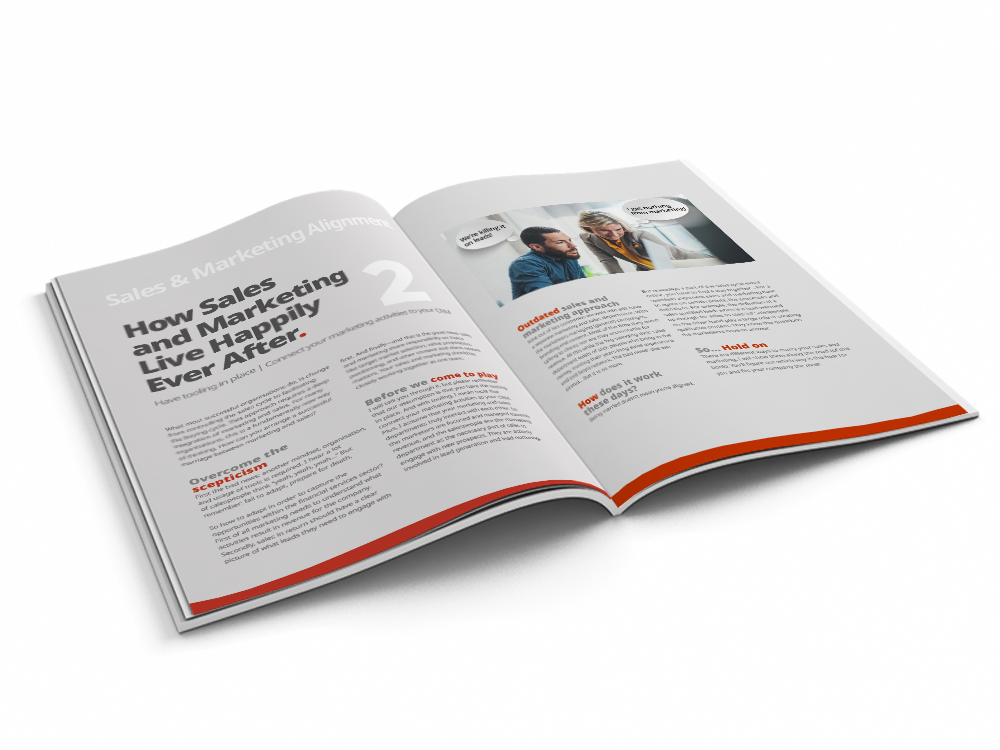
The 7 habits of highly effective fintechs
What are the 7 key habits that are continuously practised by successful fintechs? Follow the habits outlined in this e-book and you will be well on the way to growth.
